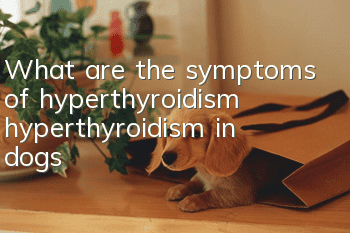Pets maintain a good appetite, these mysterious elements are indispensable

Protein and amino acids
Protein and amino acids are familiar words to us, and we also know that they are important components in our bodies and the bodies of cats and dogs. However, are the various "protein supplements" and "high-quality protein" cat and dog food labels on the market also confusing? Owners are a little confused? What effect does protein have on cats and dogs? The Academy will reveal the secrets of protein & amino acids to you today.
What is protein?
Protein is a macromolecular substance composed of "amino acids" connected through long chains. Different amino acids are strung together to form various proteins. Long chains of protein are broken down by enzymes into their corresponding amino acids, which are then absorbed in the small intestine. These amino acids do things like repair organs and tissues, carry molecules, carry messages from one organ to another, and help the body fight disease. Therefore, the protein eaten by cats and dogs must be converted into amino acids and absorbed in the small intestine.
Protein is divided into good and bad ones:
The quality of protein depends on the digestibility and amino acid composition of the protein itself. Not all substances can be digested and absorbed. The efficiency with which nutrients are absorbed is digestibility. Protein is composed of essential and non-essential amino acids, and its digestibility generally ranges from 50% to 95%. Only proteins with a reasonable ratio of essential amino acids and high digestibility can be considered high-quality proteins. Pet owners can refer to the picture below when preparing daily meals for cats and dogs.
It can be seen that the quality of protein is mainly determined by the ratio of amino acids. So what are amino acids, and what amino acids are needed by cats and dogs?
What are amino acids?
Amino acids are the basic elements that make up proteins and their derivatives. There are a total of 20 different amino acids in protein, of which only 11 (for cats) and 10 (for dogs) are essential amino acids. Essential amino acids are those that the body cannot produce on its own and must be obtained from the diet.
The role of amino acids
The body needs amino acids to ensure healthy physiological functions. Without essential amino acids, kittens and puppies will grow slowly and their health will be jeopardized; if adult animals do not get enough, processes such as the removal of nitrogenous waste and the synthesis of hemoglobin will be damaged. Different amino acids have different important effects on the health of cats and dogs. The functions of some common amino acids are listed below:
Table: Different amino acids in the body of cats and dogsFunction
Lysine: the mysterious amino acid that keeps your pet’s appetite
Generally speaking, lysine is an amino acid that requires special attention in the daily diet, which means that if pet food is not scientifically formulated, the risk of lysine deficiency is the greatest. Lysine is very sensitive to high-temperature heating, and during the processing of pet food, it will react chemically with sugar (Maillard reaction). This reaction is considered to be an important factor in the flavor of pet food.
Lysine is very abundant in animals, especially in their muscle tissues. At the same time, soy protein is also a good source of lysine. Lysine is an essential amino acid that must be obtained from food. A deficiency in lysine can cause your pet to eat less and lose weight. Excess lysine can cause symptoms of arginine deficiency in puppies. Therefore, we should choose food with scientific nutritional proportions for them from an early age
Figure: Effect of lysine on protein synthesis
- How to treat diarrhea in pregnant dogs?
- How many months should you start training a German Shepherd? The best time to train a German Shepherd!
- When is the best month to train a Lala? The best age to train a Lala!
- Why are fewer and fewer people raising Papillon dogs? These 5 reasons must be mentioned!
- Things to note when raising a Russian Wolfhound
- Flat-coated Retriever personality and appearance traits
- 10 health warning signs for dogs
- My dog's throat seems to be stuck after bathing him
- What is Senior Dog Syndrome? What does the owner need to do?
- What should I do if my dog gets rickets?



